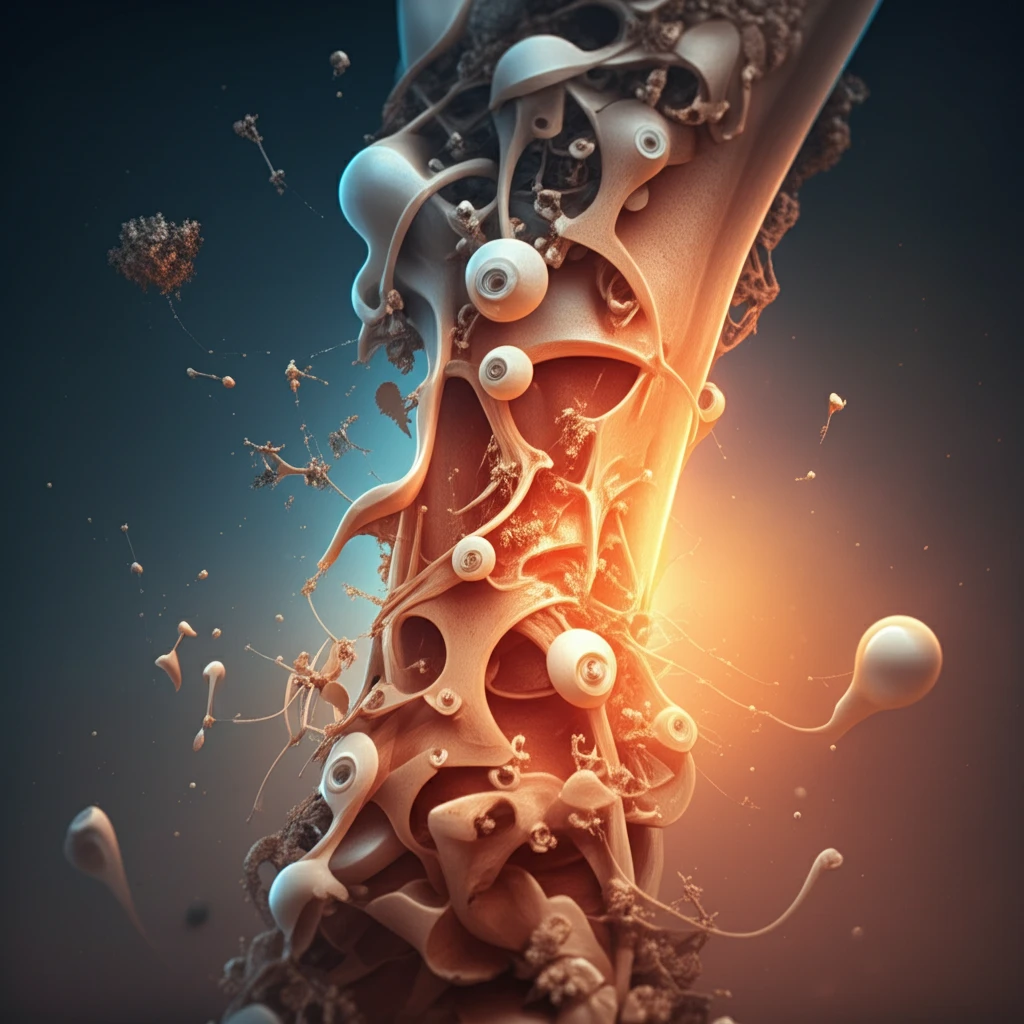
Bone Up: The Ultimate Guide to Calcium Phosphate Ceramics for Bone Healing
"Discover how calcium phosphate-based bioceramics are revolutionizing bone regeneration and why understanding their properties could be key to your recovery."
For centuries, the medical field has sought effective ways to mend broken bones and repair skeletal damage. Bone grafting, a common regenerative therapy, has been a standard practice. However, the quest for synthetic, biocompatible, and bioactive materials has led to the development of alloplastic bone grafts. These synthetic materials are designed to mimic the natural properties of bone and promote healing through a process called osteoconduction.
Among the most promising materials in this field are calcium phosphate ceramics. These include hydroxyapatite (HAp), alpha-tricalcium phosphate (α-TCP), beta-tricalcium phosphate (β-TCP), and biphasic mixtures (BCPs). These materials have garnered significant attention for their potential to enhance bone regeneration.
But what makes these ceramics so special, and how do they compare to each other? Understanding the nuances of calcium phosphate ceramics—such as their composition, Ca/P ratio, and surface properties—is crucial for unlocking their full potential in bone healing.
Decoding Calcium Phosphate Ceramics

Calcium phosphate ceramics aren't just another set of materials; they are a diverse group, each with unique properties influencing their behavior within the body. The calcium-to-phosphorus (Ca/P) ratio, for instance, plays a pivotal role in determining whether a material will be resorbed by the body or remain stable. This ratio, along with factors like raw material purity and processing techniques (such as sintering), directly affects how these ceramics interact with cells and tissues.
- Ca/P Ratio: Influences the material's stability and resorption rate.
- Raw Material Purity: Affects biocompatibility and bioactivity.
- Processing Variables: Such as sintering conditions, impact the material's microstructure and mechanical properties.
- Surface Properties: Including roughness, affect cell adhesion and proliferation.
The Future of Bone Healing
Calcium phosphate ceramics hold immense promise for the future of bone regeneration. As research continues to unravel the complexities of these materials, clinicians will be better equipped to select the most appropriate ceramic for each patient's specific needs. The development of TCP-coated BCP implants, in particular, represents a significant step forward in achieving quicker and more effective osteointegration. With ongoing advancements, calcium phosphate ceramics are poised to revolutionize the way we approach bone healing and reconstruction.
